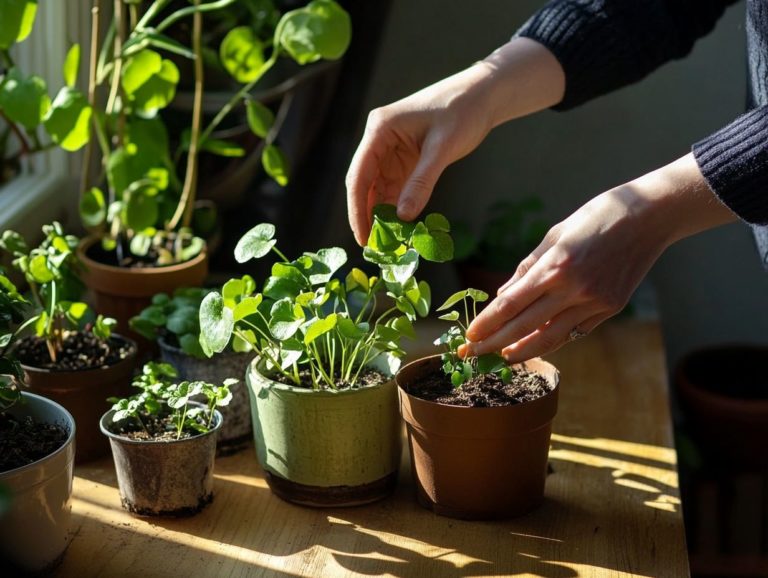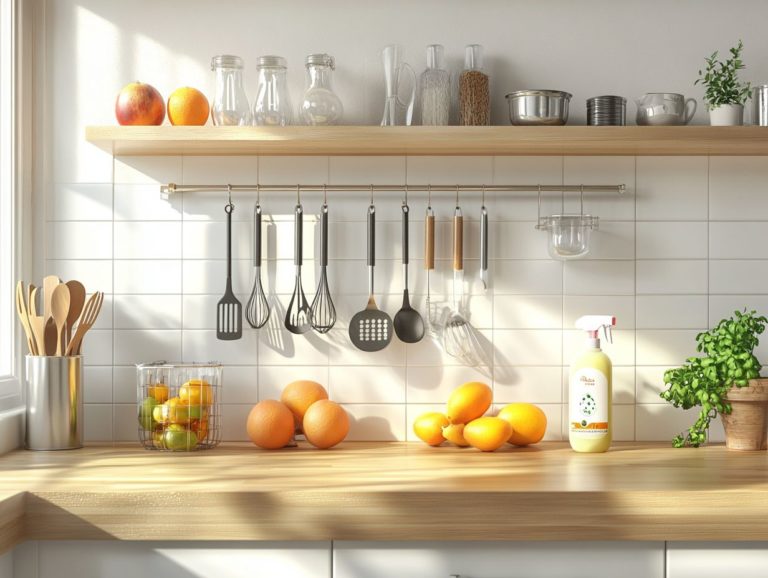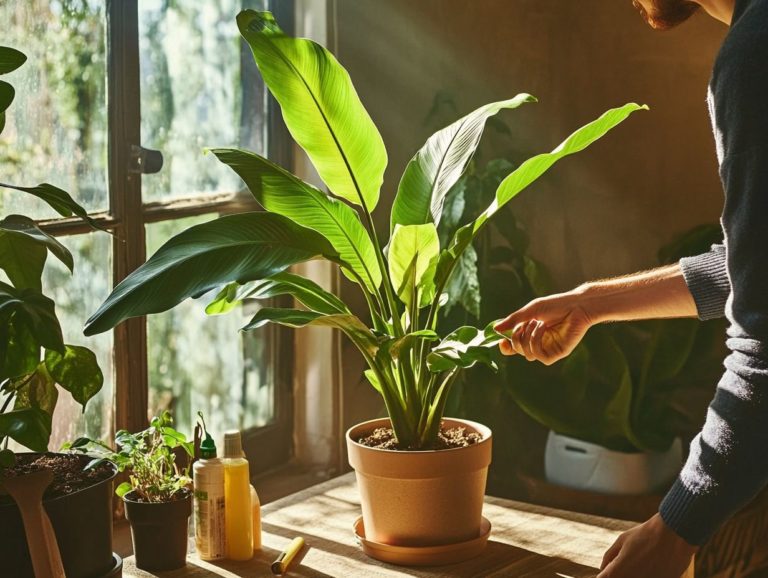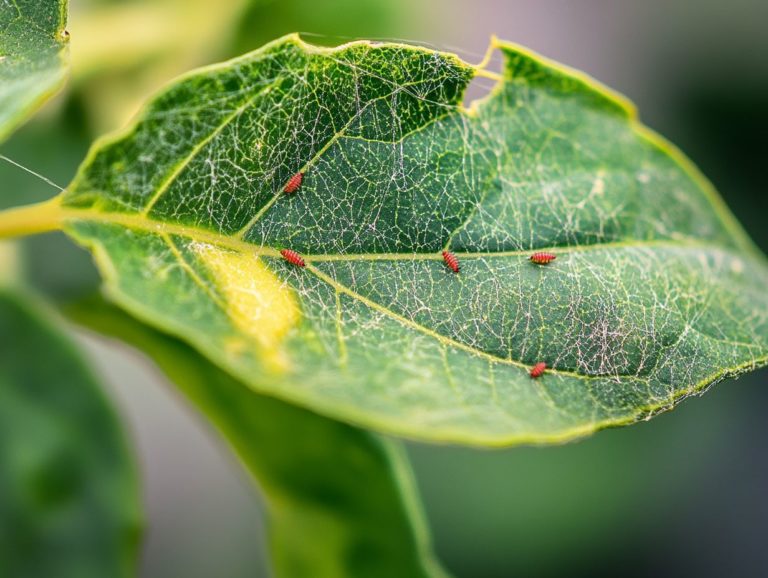Using Traps for Indoor Plant Pests
Indoor plants add a touch of beauty and life to your spaces, but they can also invite some unwelcome guests pests that put their health and vitality at risk.
Understanding the common pests that affect your plants is essential, as is mastering effective management techniques.
This article delves into the benefits of using traps as a proactive pest control method. From sticky traps to light traps, you ll discover various options and learn how to utilize them, along with other effective pest management strategies.
Get ready to reclaim your green sanctuary.
Contents
- Key Takeaways:
- Common Pests and Their Impact
- Benefits of Using Traps for Pest Control
- Types of Traps for Indoor Plant Pests
- How to Use Traps for Indoor Plant Pests
- Other Methods for Controlling Indoor Plant Pests
- Frequently Asked Questions
- What are traps used for in indoor plant pest control?
- What types of traps are available for indoor plant pest control?
- How do sticky traps work for indoor plant pest control?
- What are pheromone traps and how do they work?
- Are light traps effective for indoor plant pest control?
- Can traps be used alone for indoor plant pest control?
Key Takeaways:

- Using traps for indoor plant pests can effectively control common pests and protect your plants from damage.
- Sticky, light, and water traps are effective types of traps for indoor plant pests.
- Follow a step-by-step guide and consider natural remedies before resorting to chemical pesticides for controlling indoor plant pests.
Common Pests and Their Impact
Common pests, particularly flying pests like fungus gnats, whiteflies, and thrips, can pose a serious threat to the health of your houseplants and indoor gardens. These intruders not only wreak havoc on your plant foliage but can also lead to complications such as root rot and stunted growth.
In the worst-case scenario, they can lead to the demise of your beloved plants if they go unchecked. Grasping the implications of these pests is essential for anyone aspiring to be a houseplant lover, as it enables you to maintain effective pest control and ensure the flourishing vitality of your indoor oasis.
Benefits of Using Traps for Pest Control
Sticky traps are a great advantage for pest control in your indoor garden. These tools excel at capturing bothersome insects, such as flying pests, and play a crucial role in monitoring infestations.
This proactive approach enables you to intervene promptly, significantly enhancing the health of your houseplants.
Why Traps are Effective
Sticky traps are invaluable tools for anyone serious about houseplants, offering superior effectiveness in capturing and monitoring flying pests. They allow for early detection of potential infestations and significantly enhance the efficiency of any subsequent treatment efforts.
These traps are intricately designed with an understanding of pest behavior and psychology, ensuring that pests are irresistibly drawn to the adhesive surface through carefully chosen visual cues and scent lures. By strategically positioning these traps in likely pest hotspots, you can effectively monitor populations and pinpoint areas of heightened activity.
This proactive strategy forms a vital part of integrated pest management, a method that combines different strategies to control pests effectively. Traps serve as preventive and control tactics, reducing the need for chemical treatments. Ultimately, well-crafted traps not only assist in pest capture but also contribute to a healthier environment for your beloved houseplants.
Types of Traps for Indoor Plant Pests
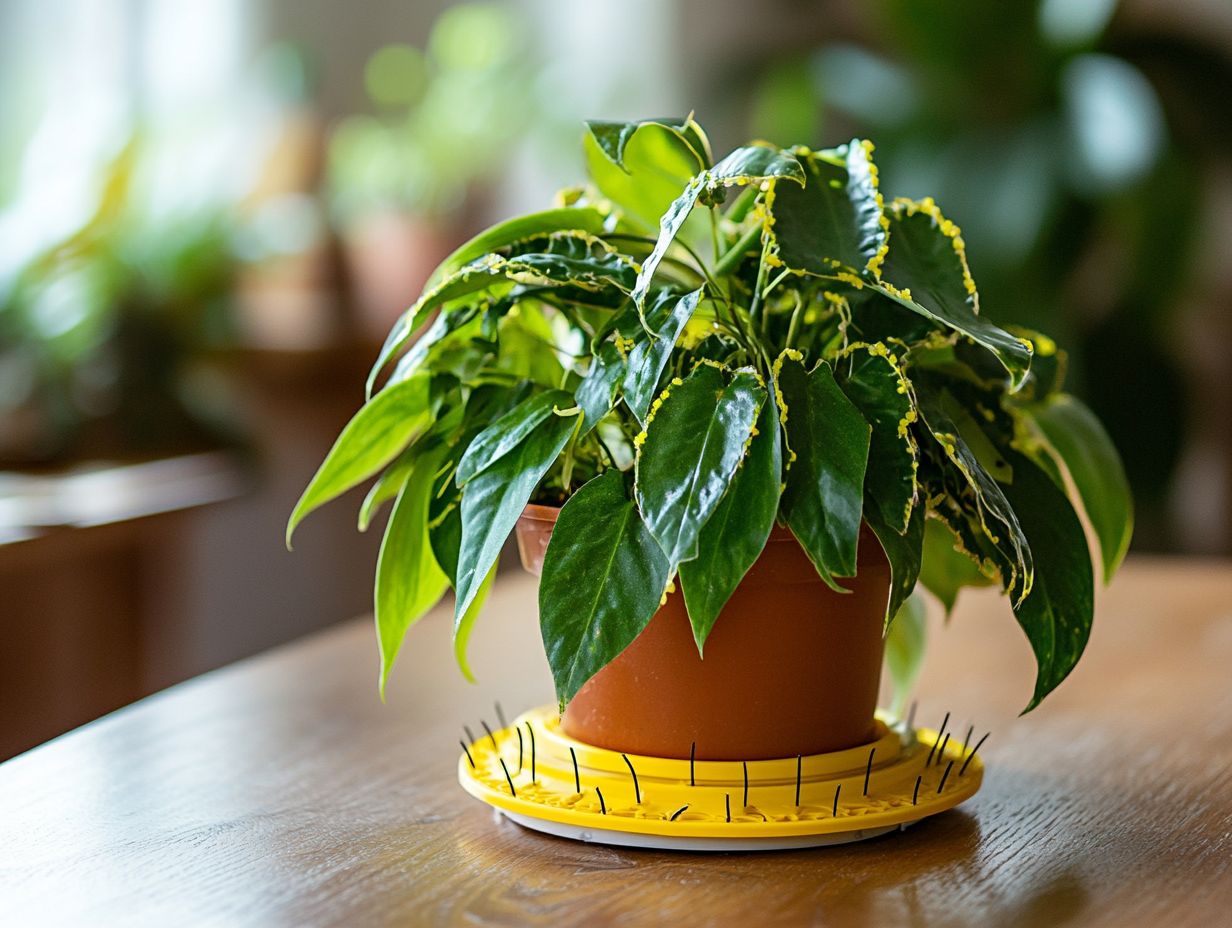
You ll find a variety of traps specifically designed for indoor plant pests, each meticulously crafted to target particular pests such as flying insects or those pesky houseplant invaders.
Among the most favored options are sticky traps, light traps, and water traps, each bringing its own distinct advantages to your pest management strategy.
Sticky Traps
Yellow sticky traps have become a favored and effective solution for managing flying pests in your indoor garden. Their bright hue is irresistible to these pests, ensuring that you capture a wide variety of species with ease.
One of the standout benefits of using sticky traps is their simplicity. There’s no convoluted setup or specialized knowledge required. Position them with ease in key locations, like near windows or doorways, intercepting pests before they invade your plants.
It’s essential to replace these traps regularly. Old or full traps can lose their effectiveness, hindering your pest monitoring efforts. Incorporate sticky traps into a more comprehensive pest management plan such as integrating biological controls and conducting regular inspections. This approach can significantly reduce pest populations and cultivate a healthier indoor environment.
Light Traps
Light traps harness specific wavelengths of light to attract and capture houseplant pests and flying nuisances. They serve as an efficient tool for monitoring pest populations in your indoor garden.
These traps excel at targeting common pests, including whiteflies, fungus gnats, and thrips. They offer a clear visual method to assess the level of infestation. By incorporating them into your routine, they not only function as monitoring devices but also play a vital role in your overall pest management plan.
Placement is crucial. Positioning these traps near infested plants or key entry points can significantly boost their effectiveness. To effectively tackle issues, it’s also helpful to know what the most common indoor plant pests are. Unlike traditional traps like sticky boards, light traps cover a larger area and are less likely to be missed, maximizing their impact in preserving a thriving indoor garden environment.
Water Traps
Water traps are a strategic choice for monitoring houseplant pests, especially effective against pesky larvae. They provide valuable insight into potential infestations before they spiral out of control.
These traps boast a brilliantly simple design that lures targeted pests think fungus gnats and shore flies, which are small flies often found near water sources into a water-filled reservoir from which they can’t escape. By placing them in settings like greenhouses or indoor gardens, you can maintain a watchful eye on pest populations.
To ensure their effectiveness, regular maintenance checks are key. Replacing the water at consistent intervals keeps them attractive to pests. Incorporate water traps into your broader pest management strategy to enhance your monitoring efforts and complement other practices like physical barriers and organic treatments. This creates a healthier environment for your cherished houseplants.
How to Use Traps for Indoor Plant Pests
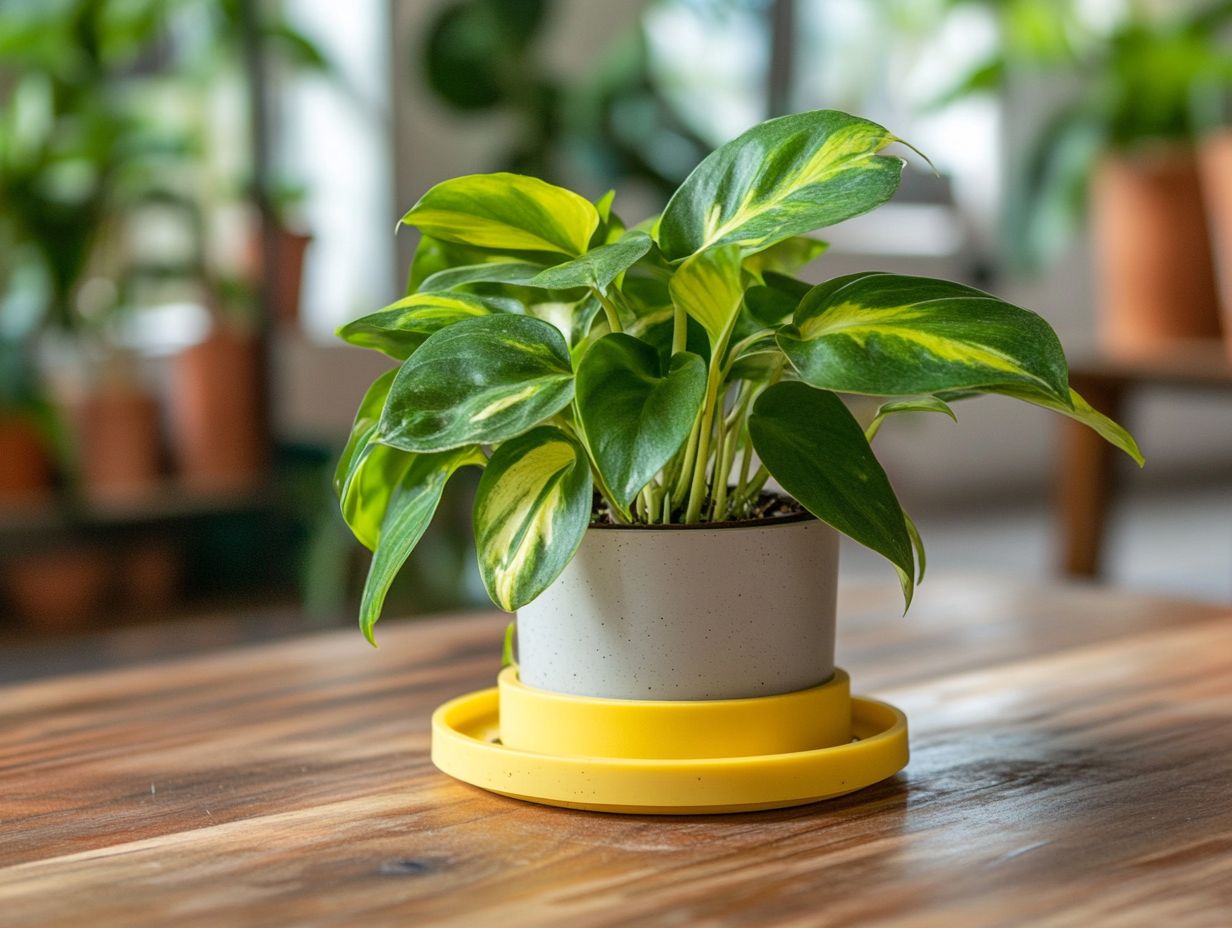
Effectively utilizing traps for indoor plant pests requires a nuanced understanding of specific placement strategies, the appropriate frequency for replacement, and the timing for follow-up treatments. This ensures optimal pest coverage for your houseplants.
By following straightforward houseplant care guidelines, you can significantly enhance the effectiveness of these pest control tools. Start using traps to manage indoor plant pests today for a healthier indoor garden!
Other Methods for Controlling Indoor Plant Pests
Along with employing traps, you have a range of methods at your disposal for managing indoor plant pests. From natural remedies like neem oil and insecticidal soap to chemical pesticides, each option presents unique advantages and challenges for achieving effective pest control.
Natural Remedies
Natural remedies like neem oil and insecticidal soap can be your allies in reducing pest populations. They maintain a safe environment for beneficial insects in your indoor gardens.
These solutions offer a comprehensive approach to pest control. They specifically target nuisances such as aphids, spider mites, and whiteflies. To harness the power of neem oil, dilute a few drops with water and apply it strategically to affected plants. This disrupts the pests’ life cycle without harming the helpful species you want to keep around.
Insecticidal soap, a soap designed to kill pests, can be sprayed directly onto the foliage infested with insects. It effectively suffocates those soft-bodied pests.
Before diving in, remember to test these remedies on a small area first. This quick test will help protect your beloved plants from any unwanted reactions. Also, avoid applying them during the hottest part of the day to minimize the risk of leaf burn and maximize their effectiveness.
Chemical Pesticides
Chemical pesticides are a common method for achieving pest control in indoor gardens. They often require follow-up treatments to ensure that infestations are thoroughly eradicated.
These synthetic solutions come in various forms, including insecticides, herbicides, and fungicides. Each type is tailored for specific pests. You ll find that application methods range from sprays to granules, offering flexibility based on your garden s needs and the pests you re dealing with.
Be aware that these chemical agents can have potential side effects. They may harm beneficial insects, contaminate soil and water sources, and pose adverse health effects to humans and pets if not used properly.
Many gardeners are now gravitating towards natural remedies like neem oil or diatomaceous earth. These offer a gentler, eco-friendly alternative. This shift underscores the critical importance of responsible usage and informed choices in pest management. It allows you to balance effectiveness with environmental and health safety.
Frequently Asked Questions
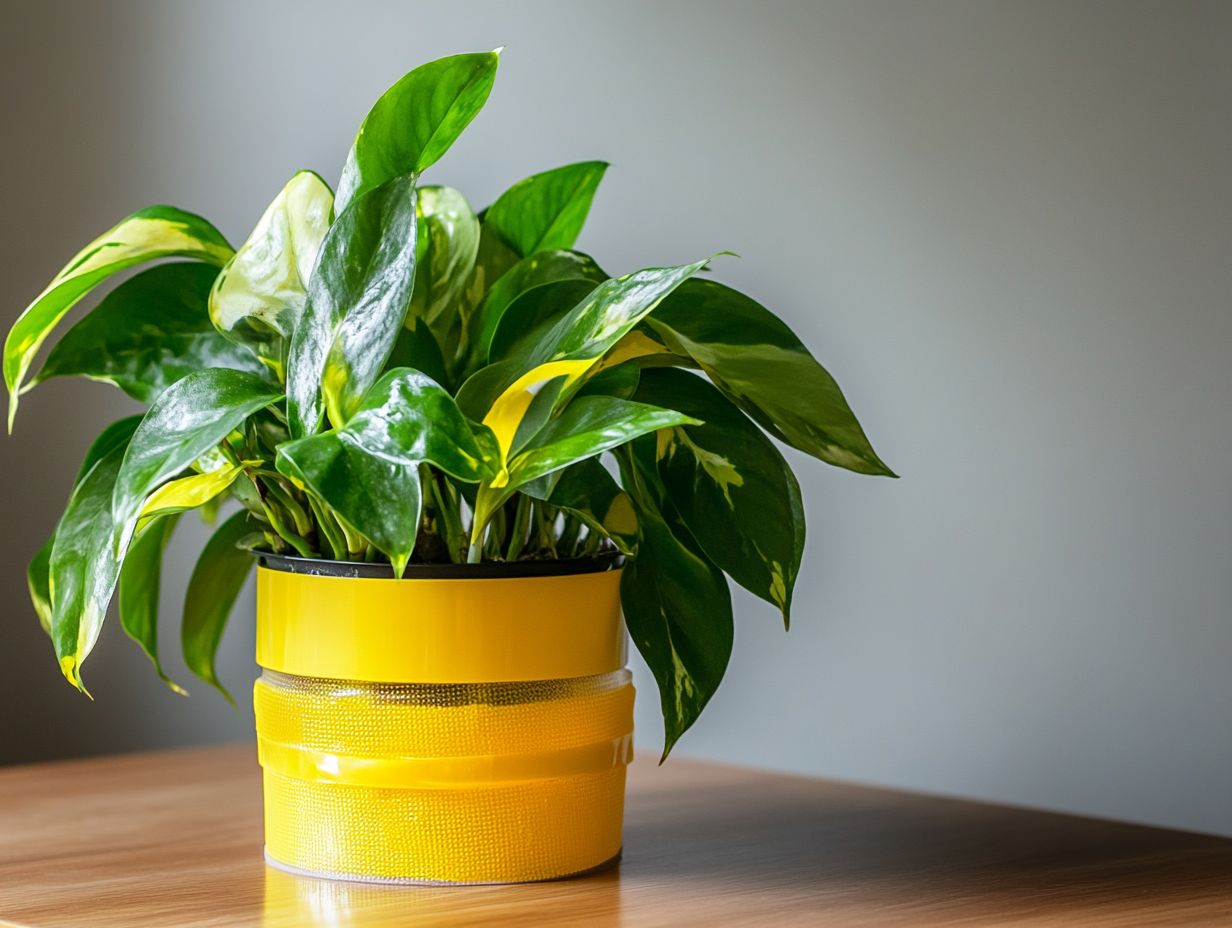
What are traps used for in indoor plant pest control?
Traps attract and capture pests that can damage indoor plants. They work by either physically trapping the pests or using attractants to lure them in.
What types of traps are available for indoor plant pest control?
There are several types of traps available, including sticky traps, pheromone traps, light traps, and mechanical traps. Each type targets specific pests and has its own unique trapping method.
How do sticky traps work for indoor plant pest control?
Sticky traps utilize a sticky surface to catch pests that come into contact with it. The pests get stuck on the surface and cannot escape, eventually dying from starvation or dehydration.
What are pheromone traps and how do they work?
Pheromone traps use synthetic versions of insect hormones to attract pests. The pests are lured in by the scent and get trapped inside the trap. These traps are highly effective for specific pests, such as moths and fruit flies.
Are light traps effective for indoor plant pest control?
Light traps, also known as UV traps, attract pests with ultraviolet light. Once they are close enough, a fan sucks them in and traps them in a container. These traps are particularly useful for flying pests.
Can traps be used alone for indoor plant pest control?
No, traps should be used in conjunction with other pest control methods for maximum effectiveness. They can help reduce pest populations, but they cannot completely eliminate them on their own.
In conclusion, understanding and utilizing various pest control methods will help you maintain a thriving indoor garden. Whether you prefer natural remedies or chemical solutions, informed choices are key to keeping your plants safe and healthy!


